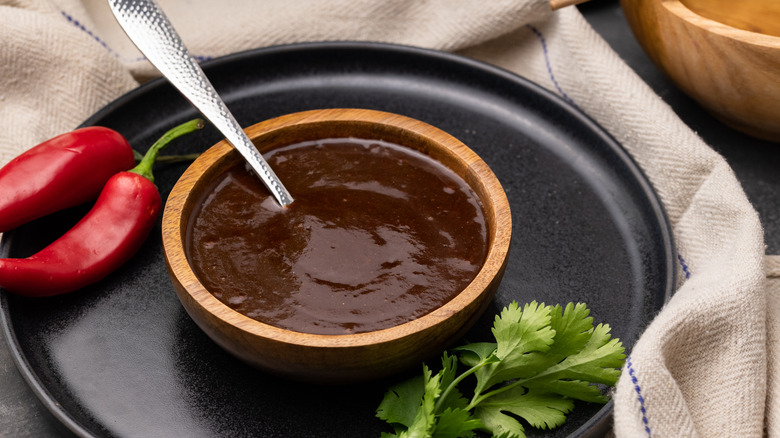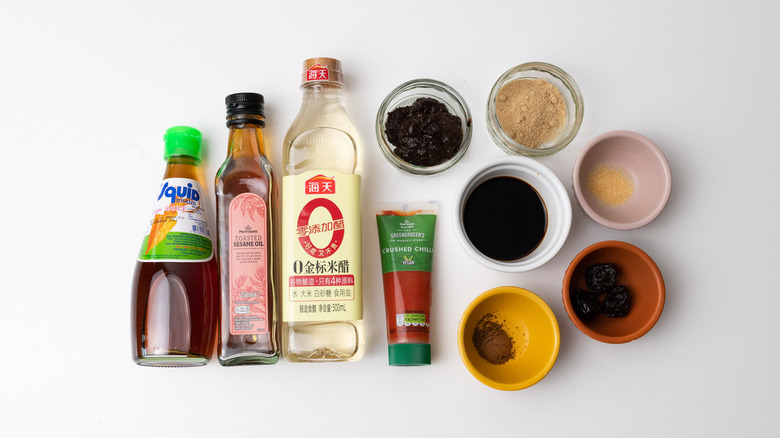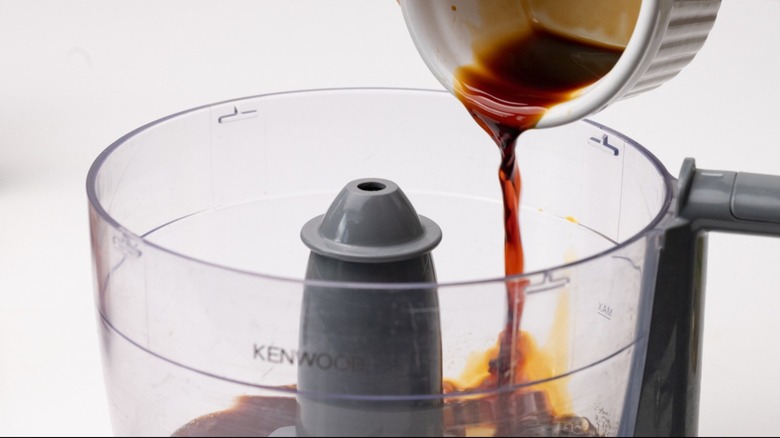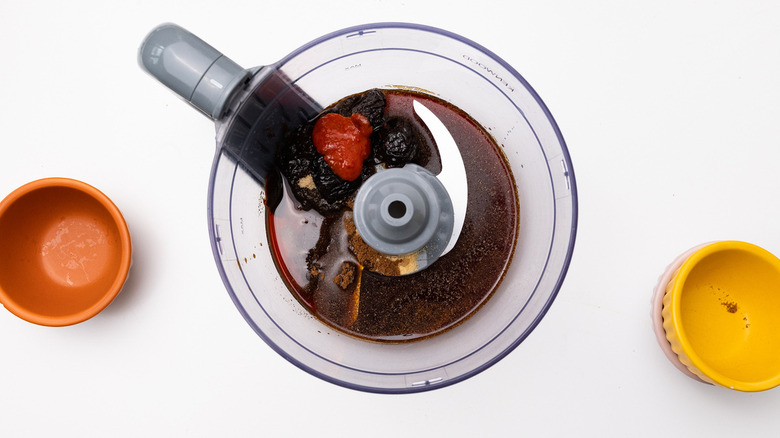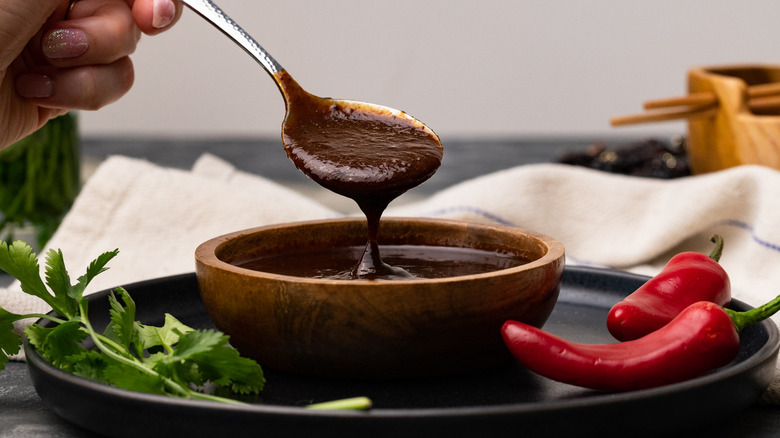Classic Hoisin Sauce Recipe
Hoisin sauce, a common Cantonese condiment, has a name that's something of a mystery. The word "hoisin" actually translates to "seafood," but the sauce is not typically used as a condiment for fish or shellfish. It generally does not contain any piscine ingredients, either, although developer Jennine Rye actually does add a splash of fish sauce to her hoisin recipe. She describes the sauce's flavor as "a delicious and potent mixture of salty and sweet tastes with a richness and a spiced umami undercurrent." Although hoisin sauce is readily available at most grocery stores, she feels that "homemade always tastes better" and notes that this recipe is "super easy to make yourself."
One ingredient Rye is using here that's not found in every homemade hoisin sauce is prunes. She does say, though, that they are "one of a variety of different ingredients that can be used to create the sweet-flavored component of the sauce." While other sauces may call for sugar or molasses, Rye explains, "I really like using prunes for this recipe because of their particular sweetness as well as the texture and depth they add to the sauce."
Gather the ingredients for homemade hoisin sauce
For Rye's homemade hoisin recipe you will need 10 different ingredients, most (if not all) of these available in a standard supermarket. The sauce gets its umami from black bean paste and soy sauce and is sweetened with brown sugar and prunes. Other ingredients include rice vinegar, sesame oil, chili paste, fish sauce, garlic powder, and five spice powder.
Puree the hoisin ingredients
Combine all of the ingredients in the bowl of a food processor or a blender and puree them until they form a smooth paste. You may want to chop the prunes first to ensure that they'll blend evenly.
Thin the sauce if necessary
Check the texture of the sauce once you've blended it as this may depend on the size and moisture content of the prunes. As Rye explains, "The consistency of hoisin sauce should ideally be quite thick; somewhat like ketchup." She also says that the sauce should be smooth, but adds that the prunes do give it a little roughage. If you find the sauce to be too thick, you can thin it out by blending in another tablespoon of water.
Put the hoisin sauce to good use
Once your sauce is the desired consistency, store it in an airtight container and stick it in the refrigerator. Rye says it'll only last for about 2 weeks (homemade stuff lacks the preservatives often found in commercial condiments), but notes that you can freeze it if you won't be using the entire amount in that time.
As for how to use your hoisin sauce, you'll find it called for in many stir-fries and other Asian-style recipes like this one for homemade General Tso's chicken. Rye suggests that it can be used as a dipping sauce or marinade, too, adding, "I've recently also seen it added as an ingredient for burger patties to give them added flavor, and I am planning to try this soon."
Classic Hoisin Sauce Recipe
This classic hoisin sauce combines sweet, salty, and umami-rich flavors.
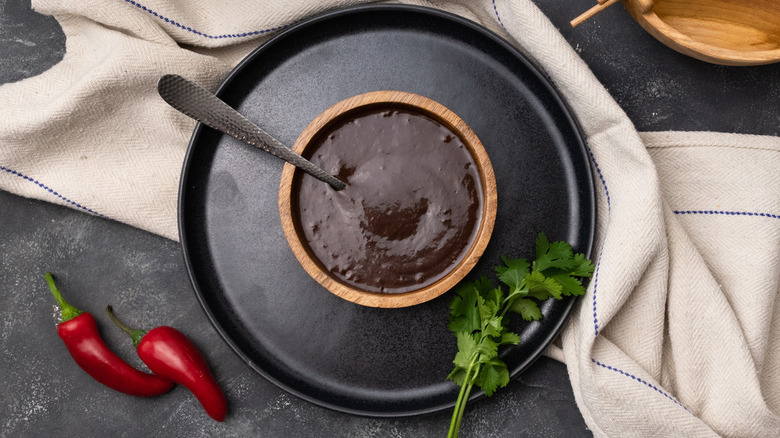
Ingredients
- 2 tablespoons black bean paste
- 2 tablespoons soy sauce
- 2 tablespoons brown sugar
- 3 prunes
- 2 teaspoons rice vinegar
- 1 teaspoon sesame oil
- 1 teaspoon chile paste
- ½ teaspoon fish sauce
- ¼ teaspoon garlic powder
- ½ teaspoon Chinese five-spice powder
Directions
- Add all the ingredients to a food processor, along with 1 tablespoon of water.
- Blend everything together until a smooth paste has formed.
- Thin the sauce by blending in an additional tablespoon of water if necessary.
- Store the homemade hoisin sauce in an airtight container in the refrigerator for up to 2 weeks.
Nutrition
| Calories per Serving | 32 |
| Total Fat | 0.9 g |
| Saturated Fat | 0.1 g |
| Trans Fat | 0.0 g |
| Cholesterol | 0.0 mg |
| Total Carbohydrates | 5.5 g |
| Dietary Fiber | 0.5 g |
| Total Sugars | 2.5 g |
| Sodium | 408.8 mg |
| Protein | 0.9 g |
